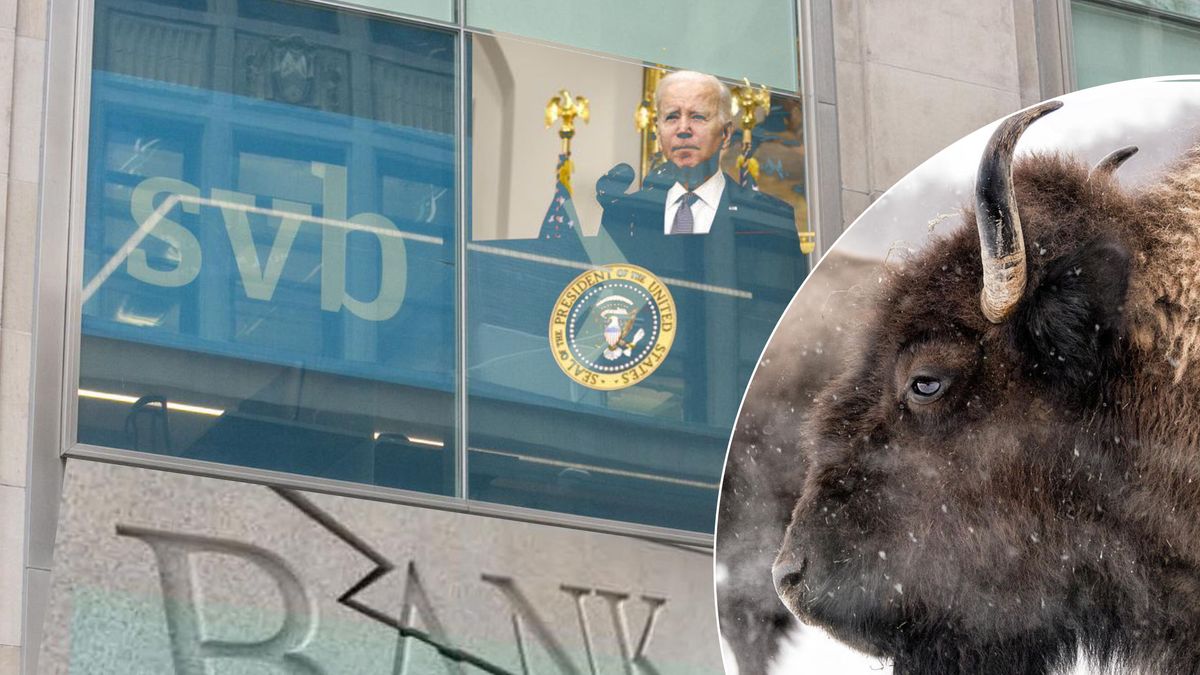Could we be witnessing the start of a modern day (1930 style) bank run? Or the start of another round of Banking bailouts and quantitative easing (money printing for the elite)?
Friday afternoon (March 10th 2023), we started to hear rumours that serval large crypto banks would likely become insolvent and be forced to close to prevent systemic risk. By Monday morning, it became clear, the banking industry is entering a period of uncertain times. Three pro-crypto banks were forced to close up shop (Silvergate, Silicon Valley Bank, and Signature). This has led many in crypto to speculate about the suspicious nature of these unfolding events. Could we be witnessing the start of a modern day (1930 style) bank run? Or the start of another round of Banking bailouts and quantitative easing (money printing for the elite)?
Initially, the events seemed focused on shaming crypto as a bad investment and demonstrating that the US administration would not protect consumers that participate in these volatile gambles. It appeared to be a coordinated attack to discredit the industry and put the blame squarely on crypto’s shoulders.
Then the announcements started to flood in from US officials, “the banking system is fine and citizens are in good hands”, declared president Biden. At this point, alarm bells start to ring with the reminiscent sounds of 2008. Things might not be as good as they seem.
President Biden has said that "Americans can have confidence that the banking system is safe. Your deposits will be there when you need them."
— unusual_whales (@unusual_whales) March 13, 2023
The second and third largest bank failures have happened in the last three days. pic.twitter.com/xP10CcLYj8
If you needed a bigger warning sign, they don’t come any bigger than the “Bank for international settlements” CEO, announcing the battle between fiat and crypto has been won by fiat - https://twitter.com/crypto/status/1628609514491740160
WATCH: The argument that crypto is an alternative to fiat currency has been settled following last year’s turmoil in the digital-asset sector, according to Agustin Carstens, the head of the Bank for International Settlements https://t.co/DLtU1Fuu5R pic.twitter.com/tUuFYVhOFa
— Bloomberg Crypto (@crypto) February 23, 2023
Today’s tweeter thread by JYP looks at one possible angle for what’s been unfolding over the weekend.
@behindtext twitter thread:
Let's review how bank runs work and look at the bigger picture.
Commercial banks in a fractional reserve system make money by creating credit, charging interest on the credit, and making a spread between their credit cost and interest collected. Depositors at a bank enable the credit creation process.
To maximize their income, banks are incentivized to issue as much credit as they can, with the constraint that they must satisfy depositor withdrawal requests. In the steady state, depositors do not request large amounts of withdrawals, so this can be smoothly managed. Most banks have a portfolio of investments that are low risk because it allows them to (usually) safely collect the spread on interest rates, e.g. home loans and govt bonds.
These kinds of investments are indeed low risk under most circumstances. The financial response to COVID-19 created serious problems for banks because it led to a massive issuance of credit over a short time. Beyond the runaway inflation this caused, this took every bank's portfolio of loans and bonds and wrecked it.
Pretty much every low-risk bank portfolio was hosed because the rate of return became (asset return rate – inflation rate). Accurate inflation figures are roughly 2 x cpi. Despite the focus on these first few banks, almost every other bank is potentially at risk. Most banks have low single digit percentages of total funds on deposit available to withdraw.
Most banks have a giant portfolio of unrealized losses, burning a hole in their balance sheet from effective losses to inflation. Given the consistency of these unrealized losses across US banks, why is it odd that the 3 lead pro-cc banks would fail first?
Pro-cryptocurrency banks closing first means several of the exits have been welded shut, the offramps from fiat to cryptocurrencies are closing. In my opinion, pro-cryptocurrency banks closing this way indicates this is a(nother) controlled demolition.
In a best case, this is a frame job to paint cryptocurrencies in a bad light, and in a worst case, this is a massive power grab by pro-cbdc and anti-cc elements. Notice that the current solution to bail out depositors at pro-cc banks is to bail-in across all other banks. This seems like a workable solution when only a few banks are involved, but at scale, this is simply an obfuscated bail-in.
When the bail-ins really start, everyone is going to be looking for an exit from fiat. Unfortunately, most of the exits have already been welded shut. Gee, what a coincidence! Someone welded the exits shut before the building collapsed!
One thing that can't be welded shut are decentralized exchanges. Non-custodial exchange of cryptocurrencies can continue without event, irrespective of fiat banking shenanigans. With relatively little effort, most Cryptocurrencies can be added to DCRDEX.
much is being made of the banks that have been forced to close in the past few weeks.
— Jake Yocom-Piatt (@behindtext) March 14, 2023
that the major pro-cc banks (silvergate, svb, and signature) are the first to pop is incredibly suspect.
let's review how bank runs work and look at the bigger picture.
What comes next?
My suspicion is insolvency and liquidity issues are widespread, and what we’ve seen over the weekend is a glimpse into a predetermined narrative. It’s also possible, this issue will be glossed over rapidly, to try to preserve a resemblance of normalcy. At this point, I would image, we are in a position that a single institutional failure would trigger a global reaction, taking decades to recover from. Some would say the action taken now is, “kicking the can down the road for the next generation”, I have a tendency to agree.
Evidence of a strategic recovery plan has started to appeared, but the US administration is avoiding words like “bail out” and “quantitative easing”, presumably, to prevent the inevitable taxpayer fallout.
“Today, Federal Reserve also announced new emergency bank term funding program. The Federal Reserve board on Sunday announced it will make available additional funding to eligible depository institutions to help assure banks have the ability to meet the needs of all their depositors.”
Over the coming months, I’m sure we'll get a clearer picture of what’s happened here, but in the meantime you can be satisfied “the banking system is safe”.
In the words of JYP:
The revolution will not be custodial
The revolution will not be permissioned
The revolution will not be centrally planned
This is why I Decred!
References:
- @behindtext – https://twitter.com/behindtext/status/1635461158495997953
- Godfrey Bloom giving a speech at the European Parliament on why fractional reserve banking is a scam 10 years ago – https://twitter.com/BitcoinMagazine/status/1634941362578808833
- Coinbase, $COIN, said it had $240 million balance at Signature Bank, $SBNY, which has just been closed by State authorities – https://unusualwhales.com/news/coinbase-coin-said-it-had-240-million-balance-at-signature-bank-sbny-which-has-just-been-closed-by-state-authorities






Comments ()